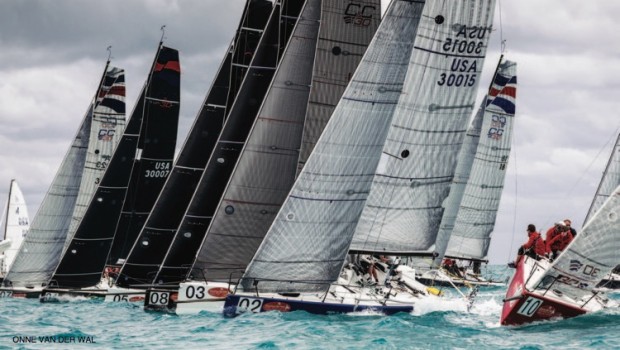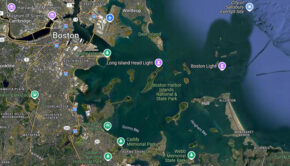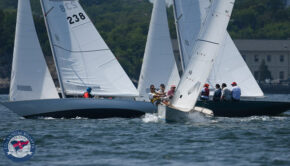Big fleets – moves that don’t work
Published on March 25th, 2016
By George Szabo, Sailing World Magazine
In order to find a whole at a crowded start, like Key West Race Week, try to break any windward overlaps as you make your port-tack approach. When you go from racing in your local 10-boat fleet to a 50-boat regatta, life on the racecourse changes. In a small fleet, if you make a mistake, it’s possible to tack away, find clear air, get some leverage, and get back in the game.
In a larger fleet, or on a small racecourse, there’s less elbowroom and mistakes are amplified, especially at the start and at mark roundings. So before you head out to your next big event, commit to memory the following high-risk tactical moves that always seem as though they’ll work, but actually have a low probability of paying off.
Here are ten high-risk tactical moves that have a low probability of paying off in a large fleet…
1. Claiming the caboose.
What do you do when you’re sailing down the line on starboard tack with 2 minutes to go, unable to jibe through the wall of port tackers returning to find a hole? You’ll often see people wait to jibe until they reach the end of the port-tack train. The last starboard-tack boat to jibe is the caboose, and being the caboose is like being the last guy into the supermarket parking lot, unable to find a spot. On the starting line, all the holes will be taken.
If the line of returning port-tack boats is too thick to jibe into, head upwind a boatlength or two and either jibe or tack. Getting back into the port-tack parade sooner will increase your odds of finding a hole on the line.
2. Sailing down the line on port tack and putting your bow to leeward of the boat in front of you.
How many times have you had your bow pinned to leeward of a boat in front of you, so close that you’re unable to tack into a great hole that opens up? When you’re stuck to leeward you have to wait until the weather boat takes the next good hole that comes along, leaving you waiting for table scraps.
Instead of getting stuck, slow your boat by easing the sails or by making large S-turns so that your bow is directly behind the weather boat’s transom. This will give you the freedom to move as you like and get the hole that you want.
3. Sailing up the middle of the course when the wind is light and the puffs are significant.
If the wind is puffy, and the puffs are moving quickly, you can defend from the middle when people from the edges are coming across with pressure. Unfortunately, when the puffs are moving slowly, or in lighter air when the pressure differences are often great (such as Biscayne Bay or Tampa Bay), the edges of the racecourse can be better.









 We’ll keep your information safe.
We’ll keep your information safe.